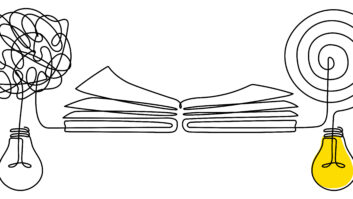Back before I boarded this leg of Mr. Toad’s Wild Ride and became a custom installer, I was a golf professional. (There is definitely a correlation here beyond just a walk down memory lane, so bear with me.) I worked at a couple of public courses before landing at a very private club in the Bay Area for about five years, and that’s where I learned about the selling power of, “Well, this is what I own…”
When I started at the private club, manufacturers reps – for clubs, balls, and shoes – would come around and want to put me “on staff.” Being on staff was a totally sweet, pretty much completely one-way relationship, with almost zero commitments kind of deal. I joined the Clevelend Golf (clubs), Titleist (balls) and Foot-Joy (shoes) staff that basically meant that I got all of my gear for free. There were two sets of graphite-shafted clubs with every angle of wedge in their inventory and multiple bags, shirts, and hats from Cleveland. “Accidentally” break a driver in a fit of rage when knocking two drives out of bounds on the 18th hole and blowing a par round? No problem. We’ll send you a new one. Two dozen Pro-V balls a month were monogrammed with my initials. And I was given two pair of shoes a year.
But the subtle, guerilla selling strategy was that when I would be out on the course, shooting near scratch (I was a 0.5. and believe me, that last 0.5 is the hardest 0.5 to overcome) round that the members would be so impressed with my playing and think, “Hmm… If John is playing so good with those clubs and balls then maybe I wouldn’t suck so bad if I had the same things. I should find out what sort of equipment he’s using…”
Sometimes it wouldn’t even be on the course; it might be in the Pro Shoppe or the Grille Room. I’d be diddling around (this was long before the days of blogging and actually before the high-speed Internets, so I was probably folding shirts, calligraphy-ing something for a tournament, or upstairs making myself a latte on the commercial Faema Due cappuccino machine) and a member would inevitably walk up to me and say, “So, John. Tell me. What sort of equipment do you use?”
“Well, Dr. So-and-so, I use Cleveland clubs. I really love their wedges. They give me terrific control around the greens. And Titleist Pro-V balls. They have great feel and action on the greens but still plenty of distance off the tee.”
“Hmmm. That’s interesting. I’ve been having trouble with my short game. Do you think those things would help me?”
“Oh, absolutely! They’re terrific. I mean, they’re not magic, but if you put a good swing on them, they’ll really come through for you. I’ve got a demo set that you can take out and try if you like.”
“Well, that sounds smashing! Let’s share a single malt to celebrate! Bar man! Your oldest, finest scotch! Two fingers, for us both. And be quick about it!” (This last part might not have happened. Like ever.)
This was a terrific sales strategy, because it was honest. Granted, I got the clubs for free, but I could have had any clubs (or balls or shoes, or whatever) for free. So I was giving the equipment the ultimate endorsement by actually using it myself. I wasn’t saying, “This is great for you, but, well, not so great for me. I need something better, cause, well, I’m better.” I was saying, “This is so great that I’m playing it, and I think you should too. And if it works for a player of my caliber, it should definitely help a player of yours as well.”
And the same thing is just as powerful and effective as a sales tool today. Telling customers, “Well, I think this is such a great – receiver, TV, projector, subwoofer, pair of speakers, remote, etc. – that this is actually the one that I own” can really work well with certain clients. The talisman of “This is what I own” is one of the most validating things you can put on a product, and CI salesmen today shouldn’t underestimate – or miss out on – the opportunity.

Telling customers, “Well, I think this is such a great – receiver, TV, projector, subwoofer, pair of speakers, remote, etc. – that this is actually the one that I own” can really work well with certain clients.
You should absolutely, definitely, positively, for sure-for sure make sure that you and all of your staff own equipment that you sell in your store. Sure, you could lie about it, but there’s just something so icky and underhanded about that, and I think it comes across and doesn’t have the same organic flow. When you really own it, there’s a different emotion and the potential customer can tell and you can personalize it by your lifestyle experiences. “You see, I love automated lighting control because in my house…”
And I can’t tell you how many times this still works for me on a sale. Letting people know that these are the speakers or the sub or the remote that I use, even if it is a model more expensive than they ultimately choose, validates the entire brand because you liked it enough to put your personal money behind it and put it into your own home. And you’ve already been established as “the expert” as I was “the pro.” So if it is good enough to meet your (real or perceived) heightened sense of audio and videophile needs, then it will clearly be good enough for them.
Nearly every company out there offers a personal use discount (a “PUD” from the golf days) for purchasing equipment for your own use. Splurge on something for yourself, and it might be one of the best sales tools you ever invest in.







